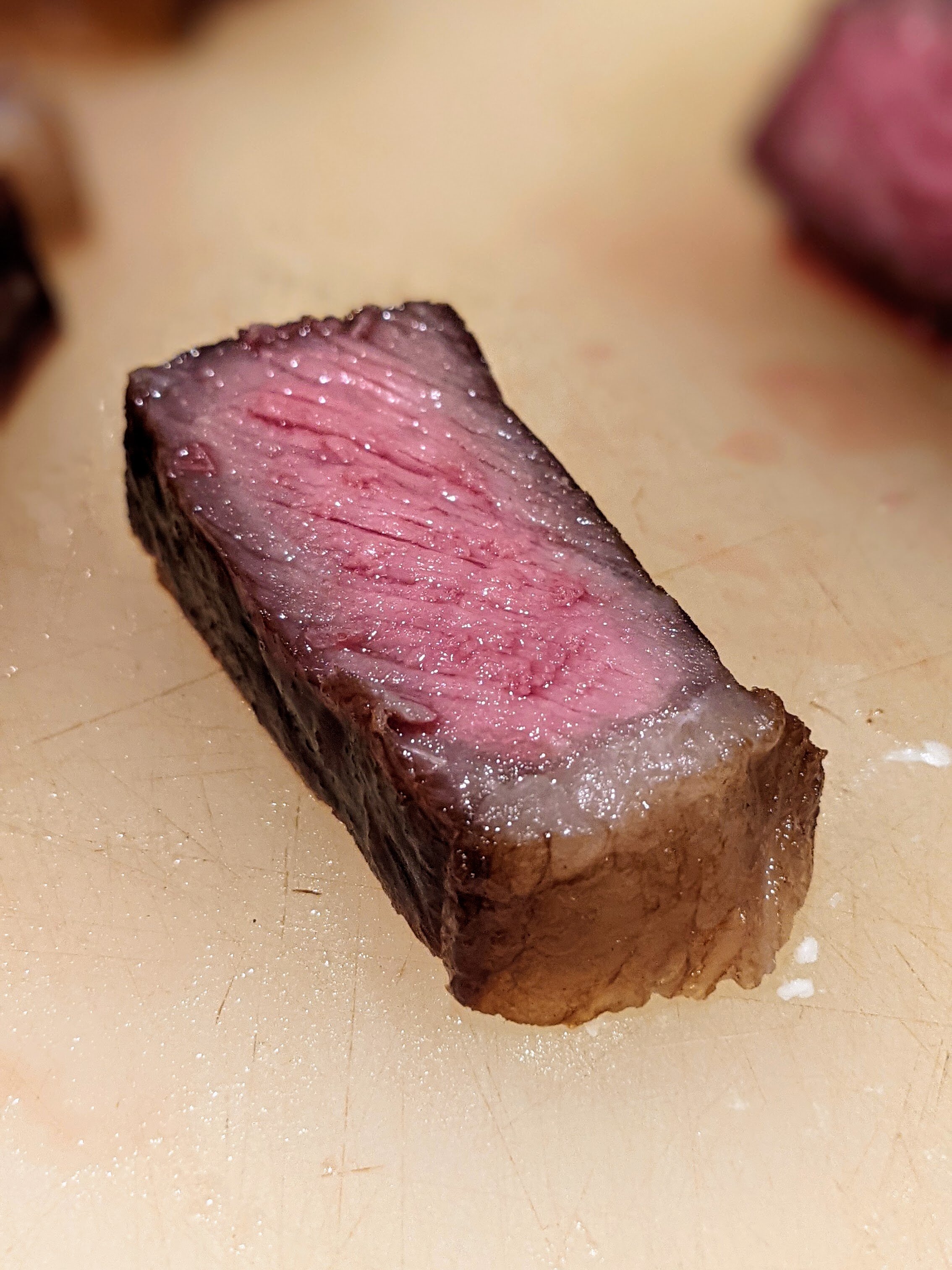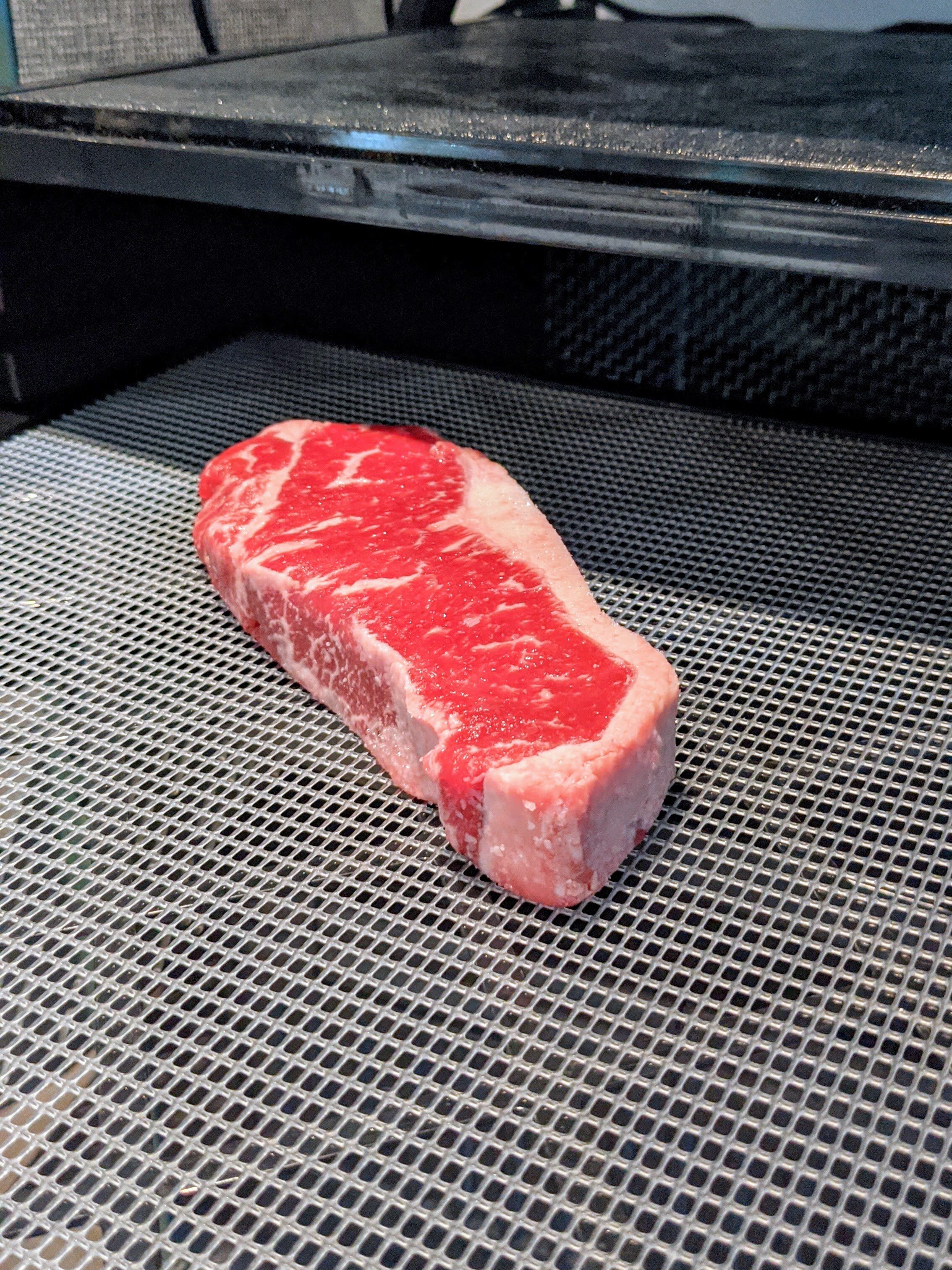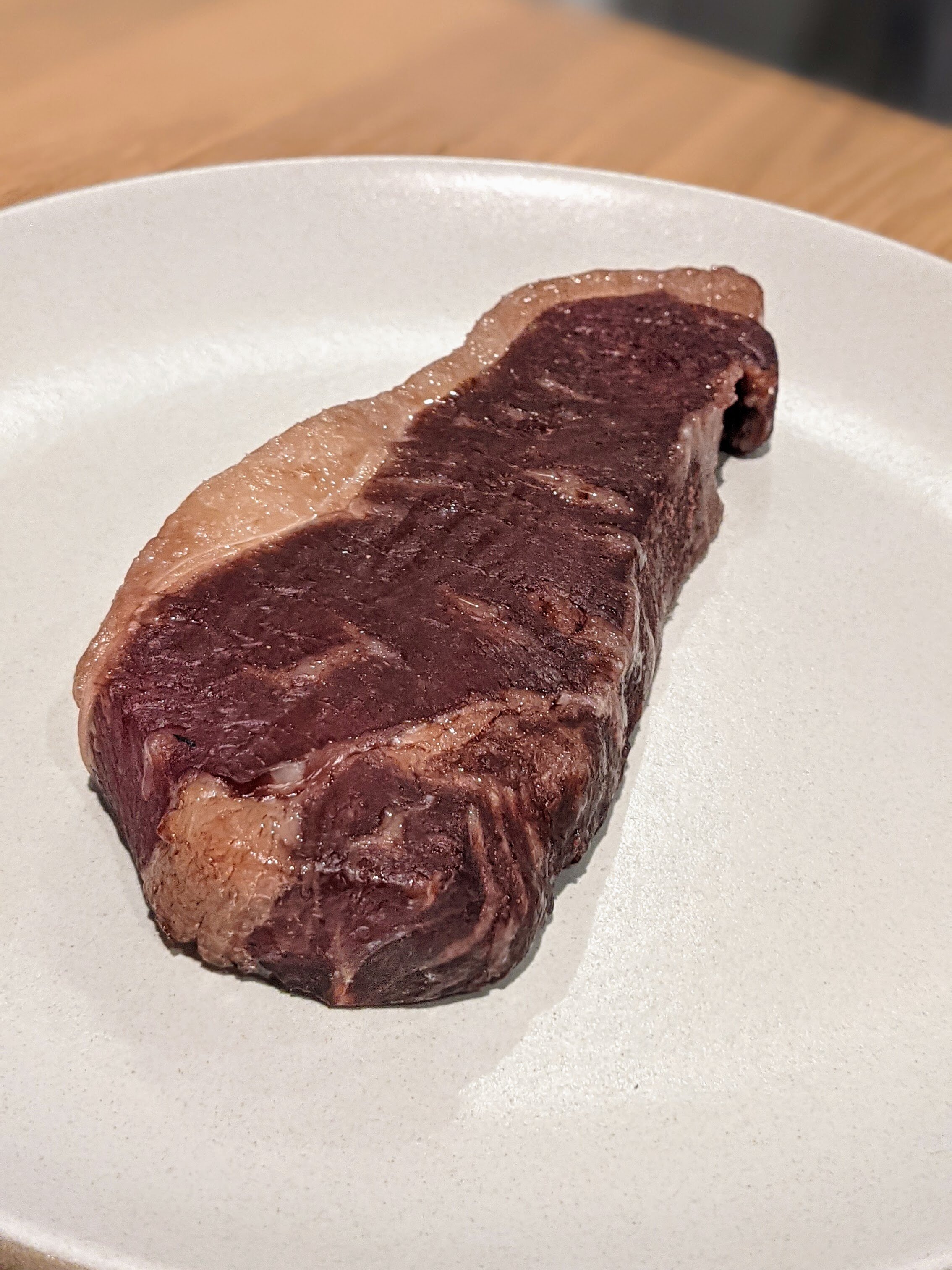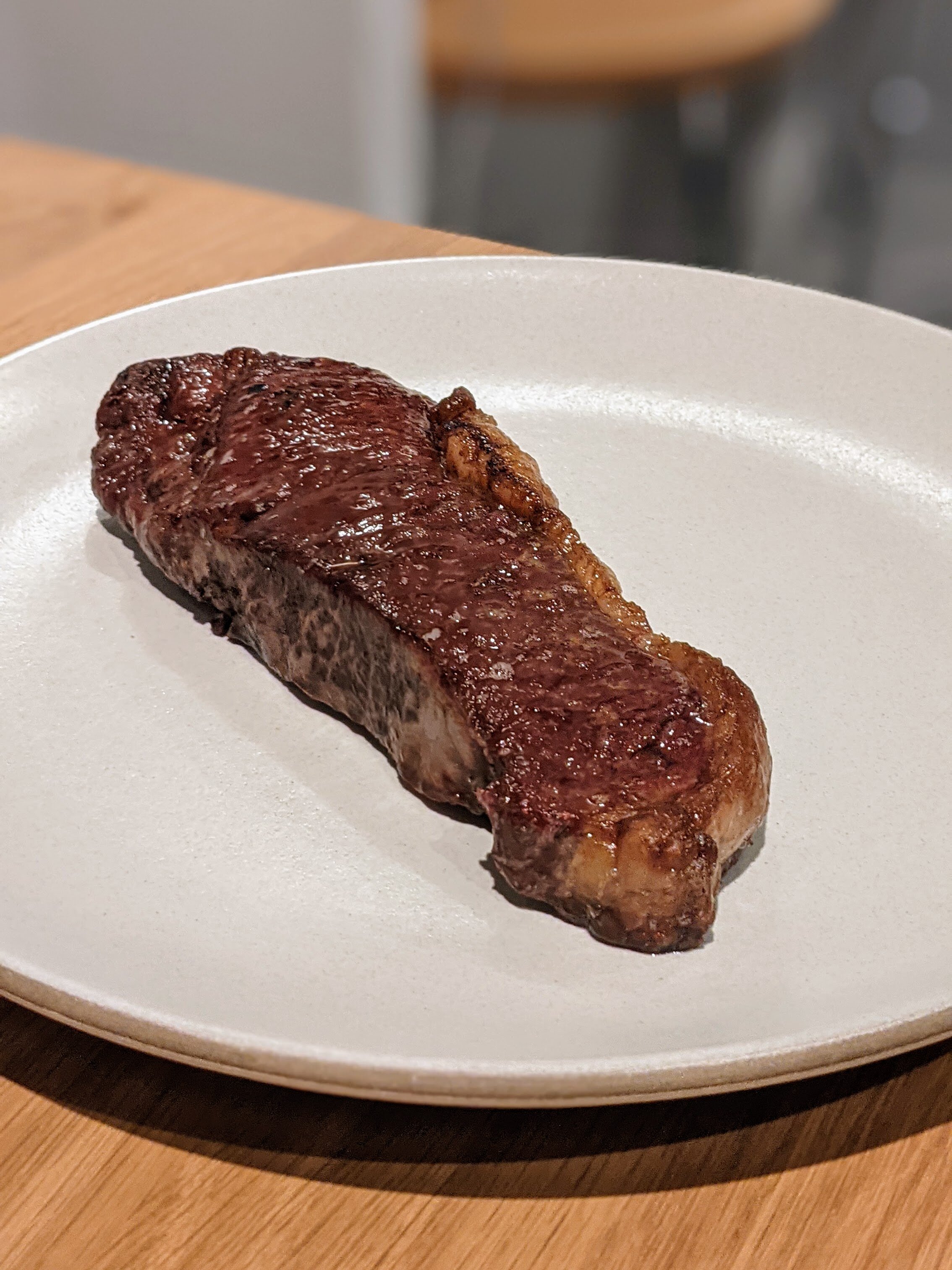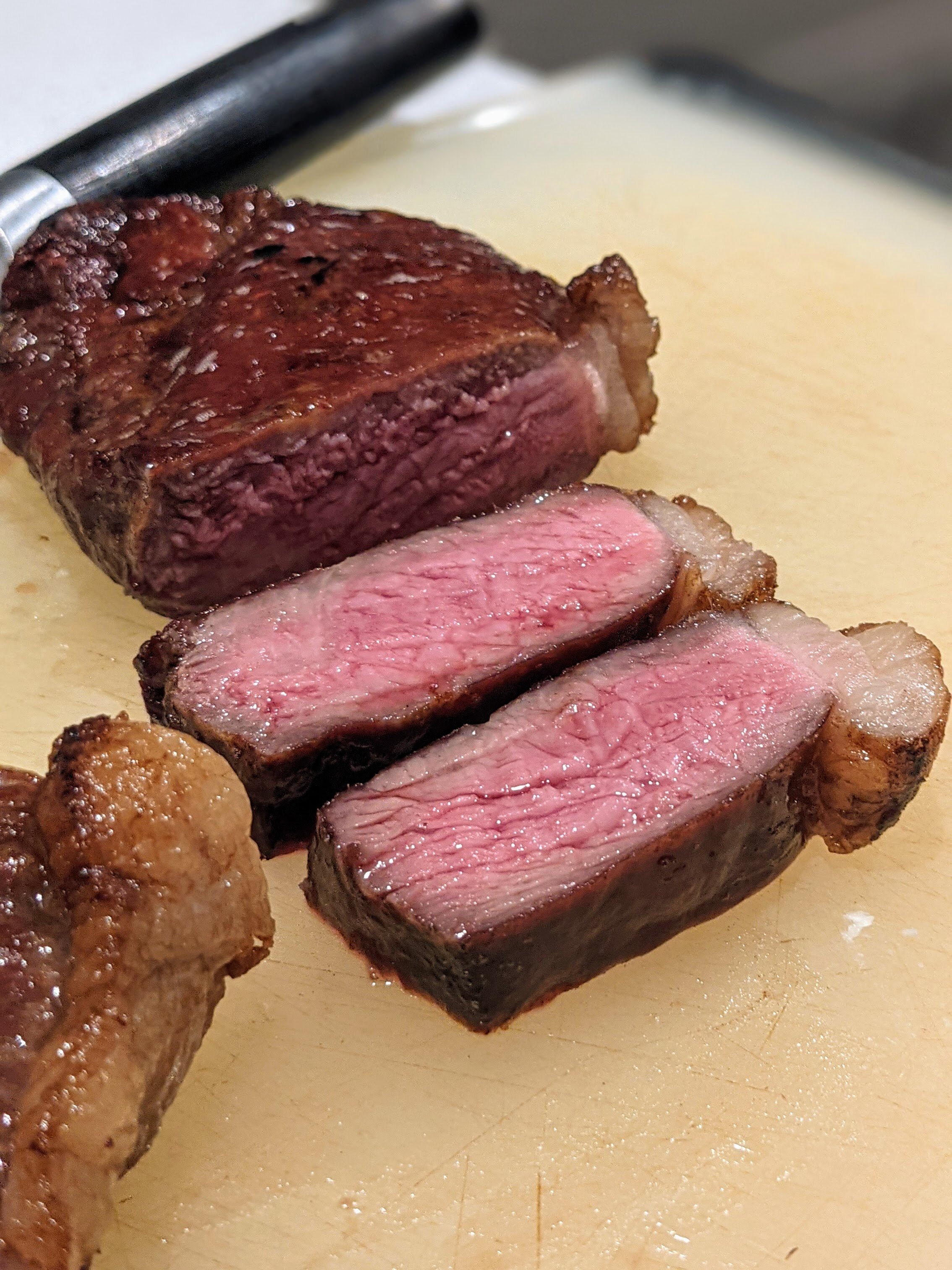Is the Best Steak Dehydrated?
There’s a new method for cooking steak that’s making the rounds: dehydrating it!
I tested the technique to see how it fairs compared to my favorite methods.
When my friend Zambrano shared his technique for dehydrating steaks, I had to give it a shot. The technique, though explored briefly by Bon Appetit in their video trying 43 steak preparations, is largely undocumented online. There’s no best way to do it yet, so I tried to find the best way on my own.
The process is similar to sous vide or a reverse sear: bring the steak to its ideal internal temperature then sear it. But unlike sous vide or a reverse sear, the cooking method to bring this steak to temp explicitly aims to wick moisture from the steak’s surface. By wicking moisture from the steak, we can ensure a harder, more uniform sear. The process also concentrates some flavors — similar to dry aging.
My approach
When attempting this method myself, I had a few theories on what it would take to do it effectively:
Salting the steak before dehydrating could help the steak retain some of its internal moisture. I primarily care about reducing external moisture, so a quick dry cure could reduce unwanted water loss. So I salted one hour before cooking.
Temperature control in a dehydrator is not as efficient as sous vide. Water is great at transferring heat, so a sous vide water bath set to 130ºf will result in a 130ºf steak. The same isn’t true with the transfer of heat over air in a dehydrator. This means that we can’t assume that a steak set to 135ºf is truly out of the temperature danger zone. And this means that we’re taking food safety risks if we choose to cook the steak for longer than two hours. So I kept the dehydration period to just two hours.
Responding to these considerations, I cooked the steak as follows:
Salt the steak at least one hour before cooking, keeping it in the refrigerator until time to cook.
Place the steak in a dehydrator set to 130ºf. Cook for two hours.
Sear the steak in a smoking hot cast iron pan with a neutral, high-smoke point oil.
At the end of my sear (not too early to prevent burning), throw in butter, thyme, and garlic.
Rest the steak for a few minutes, cut it against the grain, and enjoy.
I used my Excalibur dehydrator to do this, which is far more reliable than many of the round dehydrators I’ve tried that cost less.
The results
When I removed the steak from the dehydrator, the internal temperature was at 110ºf. The dehydrated steak looked as if it had been aged for a few weeks in just those hours. Seriously, check out these progress pics!
The searing process itself was an oddly novel experience: adding the steak to a pan without the slightest sizzle felt foreign. As predicted, it was effortless to produce a uniform sear. But to my surprise, the sear felt and looked different than a normal sear. It was charred, but it wasn’t blistered — almost like the steak was wrapped in a film of char.
Cutting it open, I was pleasantly surprised with the uniform pink inside — just like sous vide. Very small grey band. I was hopeful for the taste.
Unfortunately, the texture of the sear ruined the taste for me. The sear felt like an outer shell, a bit chewier than you’d hope for. It wasn’t awful by any means, but definitely a worse textural experience than a regular steak. Otherwise the taste was spot on, and I didn’t miss the moisture that was presumably lost in the dehydration process.
Analysis
All in all, I did not prefer this steak method to my favorite method — the sear/rest technique described in detail by chef Magnus Nilsson in Fäviken: 4015 Days.
The Nilsson steak is deeply charred but still pink, and (when done right) it soaks the taste of brown butter like no steak I’ve ever had. The dehydration approach, meanwhile, produced a steak that looked similar internally but featured a texturally bizarre surface-level sear. The process also left little room to infuse the steak with other flavors (such as smoke or browned butter). Ultimately, I deemed my first test of this method a failure.
But the story isn’t over! I posted these pics to my Instagram story. Needless to say, I was a bit giddy when one of my favorite Michelin star chefs responded to my story with his theories for why the process failed. He believes this technique shows far greater potential, and that further iteration could unlock something special. Specifically, he had the following feedback:
I cured at the wrong time. He was also worried about the ‘outer shell’ that dehydration could produce with this method. But his suggested method for dealing with it is actually salting the steak immediately before dehydration. The cure can happen as the steak dehydrates.
I worried too much about the temperature danger zone. With a steak, the primary food safety concerns are about surface-level bacteria. This cooking method ends with a hard sear that will absolutely kill that bacteria. I could have kept the steak in the dehydrator a bit longer.
Like any good cooking technique, you can’t perfect it on the first try. I’ll keep at it! Let me know in the comments if you try it yourself.
